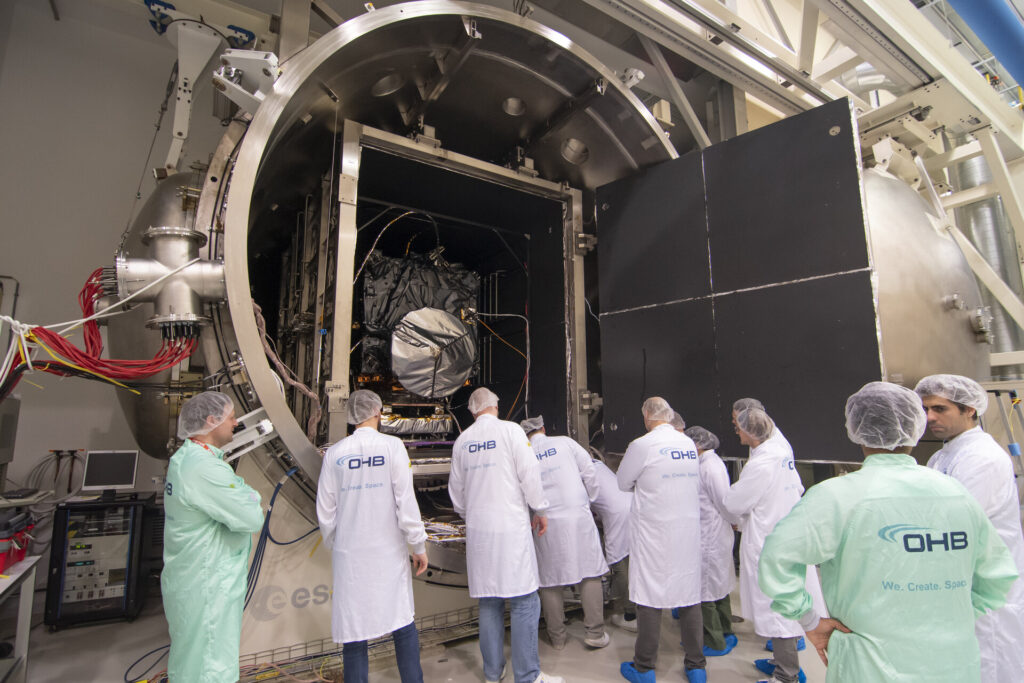ESA specialists placed the Hera spacecraft in a vacuum chamber located at the ESTEC test center in the Netherlands. It will spend the next three weeks in it, exposed to the same temperature influences as in real flight conditions.

Hera will be launched in September 2024. The purpose of the mission is the binary asteroid Didymos. In the autumn of 2022, its moon Dimorphos was rammed by the DART probe. Hera is going to study how this event affected a couple of small bodies. In addition, Hera will take with it several CubeSats, which it will release after entering orbit around asteroids. At the end of the mission, one of them will attempt to land on the surface of the Dimorphos.
But before launching Hera, engineers must make sure that the spacecraft can withstand the harsh conditions of outer space. It was placed in the Phenix vacuum chamber measuring 4.5 m by 11.8 m for this purpose. Its copper walls can be heated to 100 °C or cooled with liquid nitrogen to -190°C, and independently of each other. This allows specialists to simulate the conditions of outer space. After all, during the flight, one part of the spacecraft will be in sunlight, and the other will remain in the shade. And since there is no air in space, there is no environment to which the spacecraft could give off excess heat.
Therefore, in order to maintain the correct thermal balance, engineers use insulation and radiators. They already have detailed models of Hera’s thermal behavior, and testing in a vacuum chamber will help correlate them with reality. During the testing period, over 400 temperature sensors were placed on the body of the spacecraft. They collect information about its condition around the clock.
If Hera successfully copes with this test, then solar panels will be installed on it, after which specialists will begin preparing for the launch scheduled for October. The spacecraft will be launched from Cape Canaveral using the Falcon 9 rocket. Its arrival to Dimorphos and Didymos should take place at the end of 2026.
Earlier, we talked about the results of a study that showed that after the impact of the DART probe, there was no crater left on the Dimorphos asteroid.
According to https://www.esa.int
Follow us on Twitter to get the most interesting space news in time
https://twitter.comne/ust_magazine


